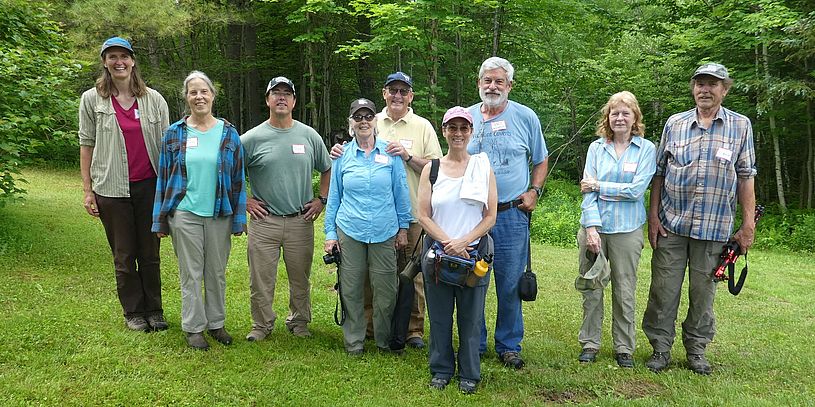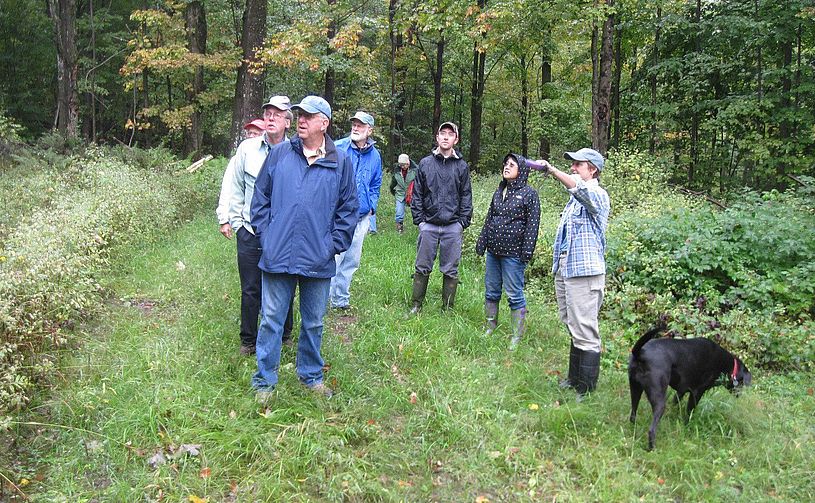Program Leadership

CHC’s Current Setup: Staff Leadership
Cold Hollow to Canada is a non-profit organization, and the Woodlots Program is run by CHC’s Programs Director. In 2021, the Programs Director spent about 10 hours per week on the Woodlots Program. This includes four separate programs, each operating in a different geography.
As you consider the administration needs of your own program, here are a few things to keep in mind:
- There is an economy of scale in running these programs. While our Programs Director takes 10 hours per week to run four programs, she expects that a single program would likely require an average of 5 hours per week.
- Starting a new program is more time intensive than maintaining an established program. For the first year of a program, you may want to count on spending closer to 7 hours per week, as you establish program goals and maintain a high frequency of correspondence with newly-engaged landowners. Over time, the time requirements of running a program may drop to 2-3 hours per week.
- Weekly averages are NOT distributed evenly throughout a month or year! The week or two leading up to a program (including the program itself) is most time-intensive, followed by very little time required over the next several weeks.
- At CHC, staff time is supplemented by time contributed by board members. The Programs Director is responsible for overall program administration, organization, grant tracking/fundraising, and she leads at least one field day for each program each year, but board members often volunteer their own time to lead some of the field walks.
- We hold our programs on weekends. Staff and/or volunteers will therefore need to be willing to work some weekends.
- Depending on the initial goals of your program, some programs may be most effective in the short term, and long-term programming may not be needed. For example, if your end goal is conserving 1000 acres in permanent easements, you may have a point in time in which the program is “finished.” At that point, the program can move elsewhere, change to focus on land stewardship, or perhaps simply be done.
To see an overview of expenses associated with the program, visit the "Funding and Expenses" page.
Job Descriptions
Because we've been asked, we share here the job announcements of our Cold Hollow to Canada staff who administer the program. (You may have very different needs than CHC!)
- Woodlots Program Manager (from 2020)
- Administrative Coordinator (from 2018)

The Role of Volunteers
In the early days of the Woodlots program, volunteer board members led these programs in their entirety! This is certainly possible, if you have a dedicated volunteer. However, there are many factors to consider:
- Do the volunteers have the time to run the programs? Tasks involve:
- Finding program participants
- Compiling email lists
- Keeping track of who has done what, where, and when
- Finding hosts
- Finding speakers
- Orchestrating resources, such as Songbird Habitat Assessments, Climate Change Analyses, etc.
- Who will lead the programming? The CHC board members who initially ran the programs were two foresters. Their expertise typically provided content for the programs. They were also both very comfortable sharing their expertise in a teaching style of presenting. While all walks don’t necessarily need a leader, since some landowners feel comfortable sharing their own stewardship activities and form discussions, we believe the success of the programs is based on the structure and expertise provided to the groups.

